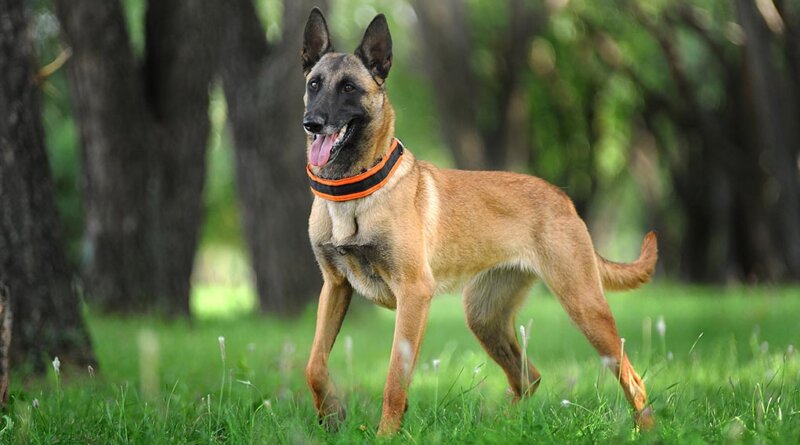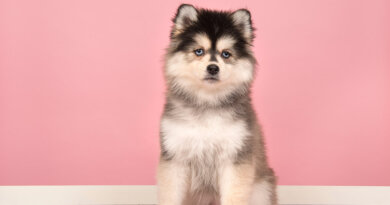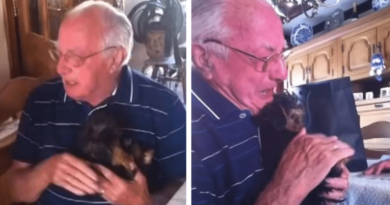Belgian Malinois Dog Breed Profile – Top Dog Tips
Strong, loyal, and intelligent. These are just a few words to describe the Belgian Malinois dog breed.
These dogs are world-class workers, originally bred to be herding dogs. Now, they serve on the front line as police and military or protection dogs for your family.
Don’t mistake them for German Shepherds. They may look a little the same, but we ensure you that they are their own breed.
For instance, they have different heads, and the Belgian Malinois is leggier and finer-boned.
If you’re planning to adopt a Belgian Malinois puppy, you’re probably wondering about its physical appearance, temperament, health, and other characteristics.
But before we discuss these things, let’s first tackle their history. Are you curious about where they originated? Well, you better scroll down!
Belgian Malinois History
In the late 1800s, the Belgian Malinois (MAL-in-wah) was first bred around the city of Malines in the northwestern region of Belgium. They are one of four varieties of Belgian Sheepdogs.
They are differentiated by their coat and color. The other three varieties are the Tervuren, the Laekenois, and the Groenendael.
But in some countries, these four dogs are classified as a single dog breed named the Belgian Sheepdog. But in America, the breed has been recognized as a separate breed since 1959.
In September 1891, the Club du Chien de Berger Belge (Belgian Shepherd Dog Club) was formed mainly to determine which dogs were representative only of the shepherd dogs developed in Belgium.
In November of that same year, breeders and enthusiasts met to examine shepherd dogs from the outskirts of Brussels.
After a long examination by veterinary professor Adolphe Reul and a board of judges, they concluded that the native shepherd dog of that province were square, medium-sized dogs with triangular ears and dark brown eyes.
They also differed in texture, color, and length of hair. Furthermore, other examinations of dogs in other Belgian provinces resulted in similar results.
And in the following year, Professor Reul wrote the first Belgian Shepherd Dog standard.
Mals have been known as peerless livestock herders in their motherland. And in 1911, the Belgian Malinois first stepped foot in America.
They thrived in popularity until the outbreak of World War II, which caused a halt to European imports.
Physical Characteristics of Belgian Malinois
Belgian Malinois dogs have excellent physical traits. With their medium to large body build, short coats, and powerful muscles, these dogs are truly magnificent animals.
Mals vary in size and weight depending on gender.
Female Belgian Malinois stands 22–24 inches tall, weighing at least 40 to 60 pounds. On the other hand, male Mals stand at 24–26 inches and weigh 60 to 80 pounds.
Malinois have short and straight hair. They have a hard topcoat and dense undercoat that provides weather resistance which makes them outstanding outdoor working dogs.
Their coat colors come in fawn, mahogany, red, red sable, or fawn sable with a black mask.
The Temperament of the Belgian Malinois
Since Mals were bred to be herding dogs, they love to work and they don’t do well with boredom. Depriving them of activities can cause restlessness or frustration.
But even if they are confident and might look intimidating, they are affectionate, loyal, and protective of family members. However, they tend to be reserved with strangers.
Keep in mind that temperament doesn’t happen quickly. It can be altered by numerous aspects such as heredity, training, and socialization.
Just like any other dog, socialization is crucial to the Malinois. They need to be exposed to different people, animals, surroundings, and experiences at an early age. All of this can help your pup grow to be a well-rounded dog.
A few tips on socializing your Malinois is to enroll them in a puppy kindergarten class. Another tip would be inviting visitors regularly so that they can get used to other people in the house.
Taking them for walks at a busy park can also help their social skills. If you do all these things correctly, your Malinois can be a great family dog.
Unfortunately, Mals are not recommended for first-time owners. They need consistent training and a lot of physical and mental activities to keep them happy and healthy.
Living with a Belgian Malinois
Well-socialized Mals are good with children, especially if they grew up together. But keep in mind that due to their herding heritage, they may try to herd them when playing.
If this happens, you must be firm and teach your pup that the behavior is inappropriate.
Also, as the parents of both children and dogs, you’re the ones responsible for teaching your child how to interact with and approach dogs. Always supervise them to prevent any biting or pulling of the ears or tail.
Belgian Malinois tend to be aggressive towards other dogs and pets unless they grew up with them.
If you want them to get along with other pets, such as cats, it would be best to start at a young age and reward them for appropriate behavior.
Mals also have high energy and exercise needs. That’s why these dogs are not recommended for apartment living or any small spaces where they can’t run around and have their daily exercises.
Training & Exercise
It is best to train with positive reinforcement. Belgian Malinois are sensitive dogs, and they do not respond well to harsh training methods.
As we’ve discussed above, Malinois is best suited for people who have previously owned and trained a dog. They are not recommended for people who work all the time and travel often.
These dogs are very intelligent, and they are built for action. If you’re the type of person who loves to hike, jog, and do other physical activities, the Belgian Malinois is the dog for you.
You can also train them to compete in obedience or agility. But what matters is that you keep their mind busy, and their body moving.
Watch out since they will try to run in large circles in the backyard because of their herding heritage.
Exercise is just as crucial when it comes to dogs. Belgian Malinois needs vigorous daily exercise and mental stimulation to maintain their health.
It’s best advised to have your Malinois for at least one to two hours of exercise per day. This can include walks, running, hiking, swimming, or playing fetch.
Belgian Malinois Health Care
Generally, the Belgian Malinois is a healthy dog breed. Their life expectancy is at 14 to 16 years!
If you’re planning to adopt a Malinois puppy, you have to be knowledgeable about certain health problems that they can be prone to.
In this way, you will not get caught off guard, and you’ll know exactly what to do if these unfortunate occasions happen.
We’re not saying that all Malinois will eventually get all these issues, but it’s best to be prepared if you’re considering adopting this breed in the future.
Hip Dysplasia
Hip Dysplasia is a hereditary issue wherein the socket of the joint and ball becomes distorted.
If your Malinois gets diagnosed with Hip Dysplasia, it’s important to keep their weight within the normal range and have them exercise with activities that promote joint therapy.
Veterinarians may prescribe medications for anti-inflammatory/ pain relievers and supplements for this condition.
If you want to prevent this condition, keep them active but not to the point that they might injure themselves. A treadmill walk or swimming is perfect for prevention and recovery as well.
Elbow Dysplasia
Similar to hip dysplasia, elbow dysplasia is a genetic condition common to large dog breeds. One possible cause of this condition is the different growth traits of the three bones that make up their elbow.
Dogs suffering from elbow dysplasia will suffer from painful lameness.
Your vet can recommend surgery to treat and correct the problem and will advise your pup to take medication to control the pain.
Progressive Retinal Atrophy
Progressive Retinal Atrophy, or PRA, is a degenerative eye disorder that causes blindness.
It is an inherited disease, and it’s known for it has no treatment. Unfortunately, it can progress fast from a year or two. Have your Malinois’ eyes checked regularly to guarantee less risk to their health.
Anesthesia Sensitivity
This dog breed is very sensitive to anesthesia. They have a high rate of death when put under anesthesia because of their muscle-to-fat ratio.
Be sure to discuss this condition with your vet if they need surgery or when they’re having their teeth cleaned.
Grooming
Overall, the grooming needs of a Belgian Malinois are moderate. Malinois has a short and weather-resistant coat with a dense undercoat.
This dog breed only needs a little more than basic grooming. You can brush their fur at least once a week to remove loose fur and prevent mats.
If you plan to adopt this breed, their shedding often increases in the spring and fall seasons.
When it comes to their nails, a great rule of thumb is to not let their nails touch the ground. Clip or trim them at least once a month.
Also, it’s still best to brush their teeth daily to avoid dental problems.
You should also monitor their ears. Their ear canals should be pale pink with a little odorless wax. Watch out for mites and foreign objects in the canal.
Frequently Asked Questions about the Belgian Malinois Dog Breed
How do you tell if a dog is a Malinois?
You’ll be able to tell a Belgian Malinois by its size and coloring.
A lot of dog owners might confuse Malinois for a German Shepherd, but Malinois have short hair, fawn in color with a black overlay, and black masks and ears.
Is Malinois good with other dogs?
Belgian Malinois could do well with other dogs if they were socialized at an early stage.
Malinois can be good with children and other pets when introduced properly, especially if they all grew up together.
How often should I bathe my Belgian Malinois?
If you can bathe your Malinois once a week, that’s great! When it comes to bathing a Belgian Malinois, it’s best advised to do it as frequently as every week or up to no longer than every six weeks.
Regular brushing is also recommended to remove loose hair and to maintain healthy skin and coat.
Belgian Malinois Dog Breed Profile: Summary
Belgian Malinois is a medium-sized dog breed from Belgium. Bred to be herding dogs, Malinois, in this day in age, still works very hard side by side with the police or with the army.
These dogs are tough, strong, and alert. Malinois has powerful protective and territorial instincts. Making them one of the best watchdogs or guard dogs in the world.
Mals are also very smart and obedient dogs. You can try and train them for obedience and agility.
This dog breed does not shed that often. Meaning all you need to do for grooming is the basics. However, Malinois need extensive care for their physical and mental needs.
These dogs need to be trained consistently and should be exercised regularly to maintain their health.
Their body is made for work and to do physical activities as their coat is weather-resistant.
But with all that being said, Mals are still affectionate to their family. With proper socialization and introduction, they can live well with other dogs, pets, and your children.
If you’re looking to adopt a Belgian Malinois puppy, keep in mind that these dogs are not recommended for first-time owners and apartment living.
These dogs require a lot of your time, and they need lots of space to play around.
RELATED: WORKING DOG BREEDS: 10 BEST HARDWORKING CANINES









